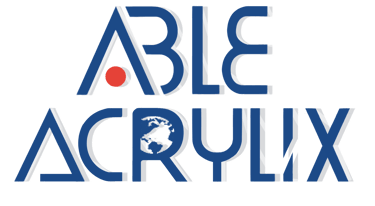PMMA and PVC compared for Environmental Impact
Acrylic (PMMA) and PVC differ significantly in environmental impact. Acrylic contains no chlorine, avoiding toxic byproducts during production or disposal. When burned, it releases minimal hazardous fumes. It’s highly recyclable—mechanical recycling repurposes 70%+ of industrial scraps, while advanced chemical recycling breaks it down to pure MMA monomer for new high-quality acrylic. Its UV resistance ensures 10+ years of service life, reducing replacement waste. PVC contains 57% chlorine. Manufacturing releases carcinogenic vinyl chloride monomers, and soft PVC requires endocrine-disrupting plasticizers (e.g., phthalates). Burning PVC generates lethal dioxins and hydrochloric acid. Recycling is challenging: chlorine complicates chemical processes, and plasticizer-contaminated PVC degrades when reprocessed. Globally, <5% is recycled; most ends up in landfills where plasticizers leach into soil/water. While acrylic supports circular recycling models, PVC’s lifecycle carries higher toxicity risks. For eco-sensitive applications (food contact, healthcare), acrylic is preferable. PVC remains in construction (pipes/cables) but requires strict disposal controls to mitigate pollution. 亚克力(PMMA)与PVC在环保性上存在显著差异。亚克力不含氯,生产及废弃过程不产生有毒副产物。燃烧时危害较小,仅释放微量有害气体。其回收潜力高:工业边角料通过机械回收可再利用70%以上;化学回收技术更能将其裂解为纯净MMA单体,用于制造高品质再生亚克力。其抗紫外线特性可维持10年以上使用寿命,减少资源消耗。 PVC含57%氯元素,制造过程释放致癌物氯乙烯单体,软质PVC还需添加干扰内分泌的塑化剂(如邻苯二甲酸盐)。燃烧时会产生剧毒二噁英和氯化氢。回收难度极大:氯元素阻碍化学回收工艺,塑化剂污染使再生料性能劣化。全球PVC回收率不足5%,多数填埋后塑化剂渗入水土,或焚烧引发污染。 综合而言:亚克力更契合循环经济模式,PVC则存在更高毒性风险。在食品接触、医疗等环保敏感领域,亚克力是更优选择;PVC虽用于建材(管道/线缆),但需严格管控废弃处理以降低污染。
6/26/20251 min read
My post content
